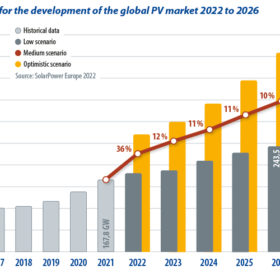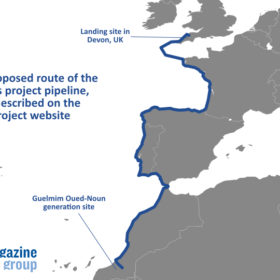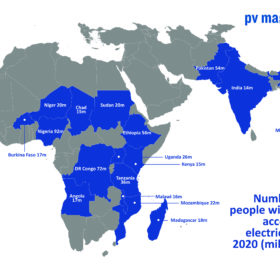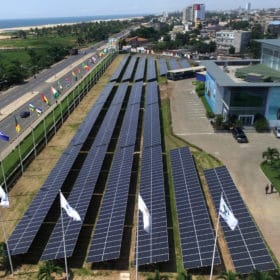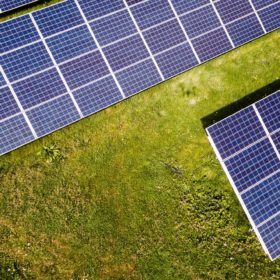From 300 GW to 3,000 GW per year – a utopia?
The photovoltaic industry is expected to achieve annual global expansion of 300 GW as early as this year. That sounds like a lot, but is it enough? In view of climate change and rising energy demand, it is time for a new vision.
Next year will bring micro and mega grids
This year has witnessed upheaval in the global energy system as inflation, geopolitical conflict, and the reality of a changing climate continue to drive the transition to cleaner energy. Next year, these trends are likely to continue and accelerate as renewable energy adoption continues to grow and the inextricable link between energy security and national security is increasingly recognized. Alan Greenshields, of US-based iron-salt flow battery maker ESS Inc, offers four predictions for 2023.
COP27 failed the most climate-vulnerable
While the climate summit held at Sharm El Sheikh last month prompted pledges of raised funding for solar lanterns and single-panel systems, the money allocated to date is woefully short of what has been estimated would be required to provide universal access to electricity this decade. Drew Corbyn of Netherlands-based global off-grid solar body GOGLA, outlines three urgent courses of action to accelerate access to electricity.
Weekend read: Shining magnate
Mining magnate Andrew “Twiggy” Forrest is the founder and executive chair of Australian iron ore producer Fortescue Metals Group. The company has announced an ambitious $6.2 billion decarbonization strategy and its Fortescue Future Industries subsidiary has rapidly become a global player in green hydrogen, along with a host of other energy transition technologies. Whether it is pushing to decarbonize mining, hashing out headline-making green energy deals, or using the popular “Rick and Morty” cartoon to educate people about the potential of green hydrogen, Fortescue and its shining magnate are talking the talk. But can they walk the walk? Blake Matich reports.
Rio Tinto to spend big on solar, storage
Rio Tinto plans to invest $402 million (AUD 600 million) to build two new solar farms and battery energy storage systems in Western Australia’s Pilbara region, as part of its efforts to decarbonize its iron ore operations.
Weekend read: Solar tops the bill
The US Inflation Reduction Act of 2022 sets aside $369 billion to decarbonize the economy and respond to climate change. pv magazine USA’s Anne Fischer and Ryan Kennedy report on the boost the landmark legislation is expected to provide to solar and battery deployment and manufacturing.
UK High Court orders nation to revise net zero strategy
The UK High Court has sided with environmental groups in a judgment that will require the government to re-evaluate its climate strategy for the 2030s and make up for an apparent shortfall that would see it miss the target of lowering carbon emissions by 78% from 1990 levels by 2035.
Solar LCOE may drop to $0.018/kWh in Africa by 2030, says IEA
The International Energy Agency’s latest “Africa Energy Outlook” report says grids will need to be expanded, along with natural gas exploitation, if everyone in Africa is to have access to electricity by 2030. On the solar front, the document predicts a levelized cost of energy of $0.018/kWh to $0.049/kWh by 2030 – cheaper than wind power or gas.
About 400 GW of solar, wind needed per year to keep mercury rise below 1.5 C
Academics in Denmark and Berlin have calculated Europe will need 400 GW of new solar and wind facilities per year from 2025 to 2035 to contribute to capping global temperature rises, in line with the Paris Agreement.
The weekend read: Key issues in PV module procurement for investors
The urgency to mitigate climate change and the need for more energy independence in many countries will boost demand for renewable energy to unprecedented levels. Meanwhile, trade conflicts, the logistics crisis, and insufficient supplies of raw materials have disrupted supply chains for the past two years. This has resulted in higher prices for solar equipment, challenging the predictability of on-time delivery and the quality of products. Sebastian Petretschek, TÜV Rheinland’s global head of PV power plants, examines the key issues in module procurement for investors.
